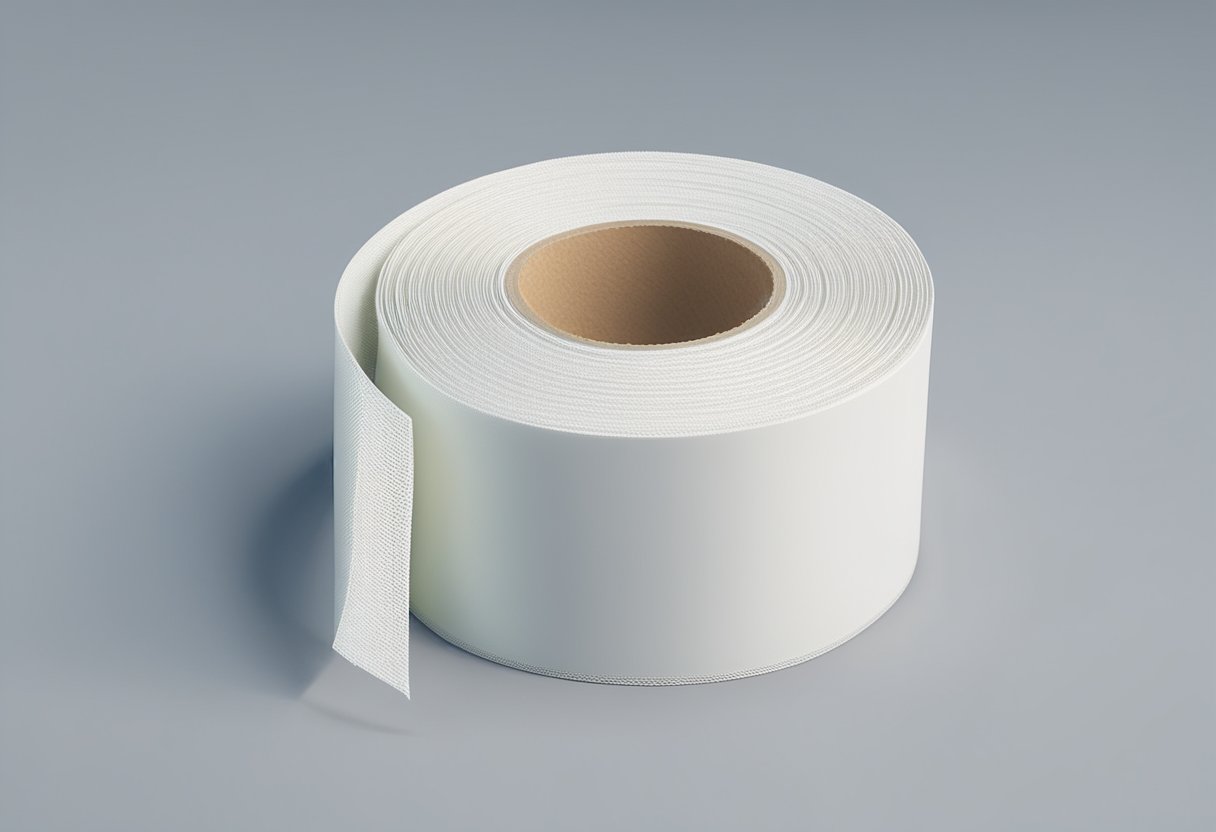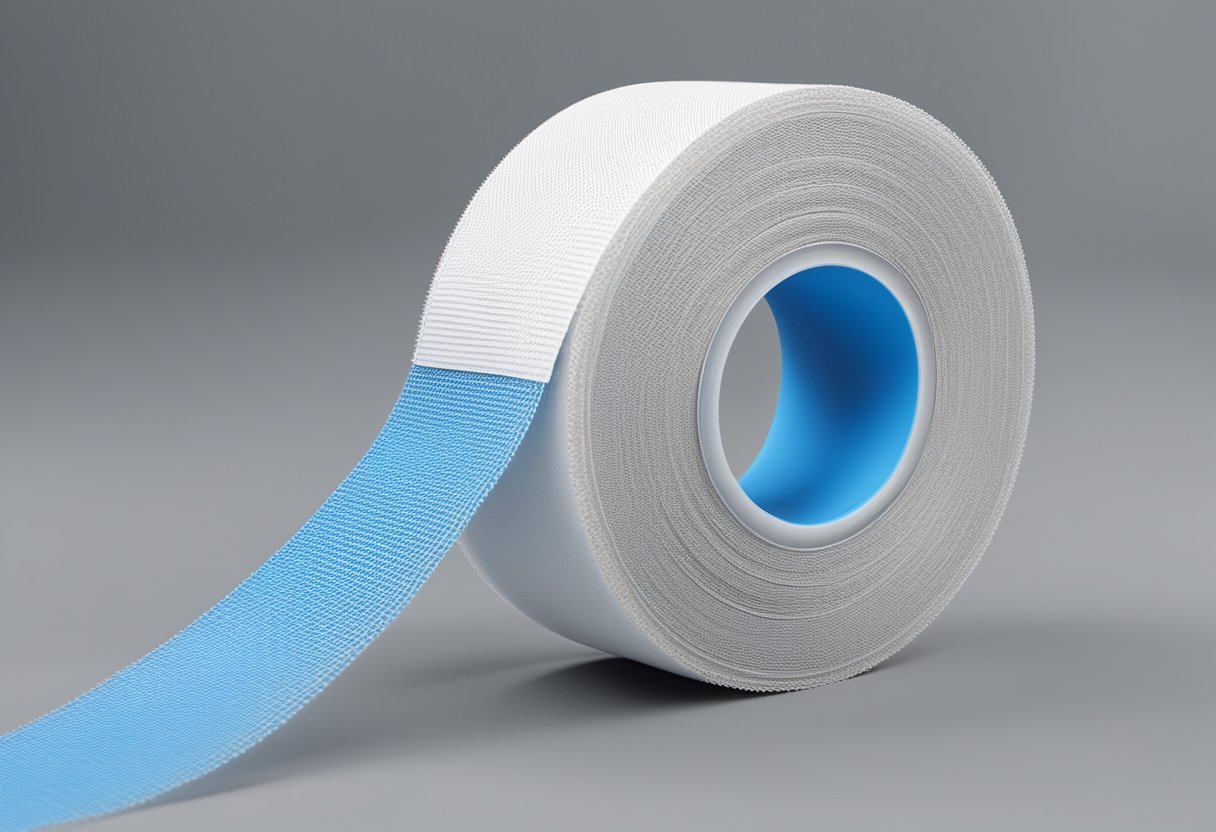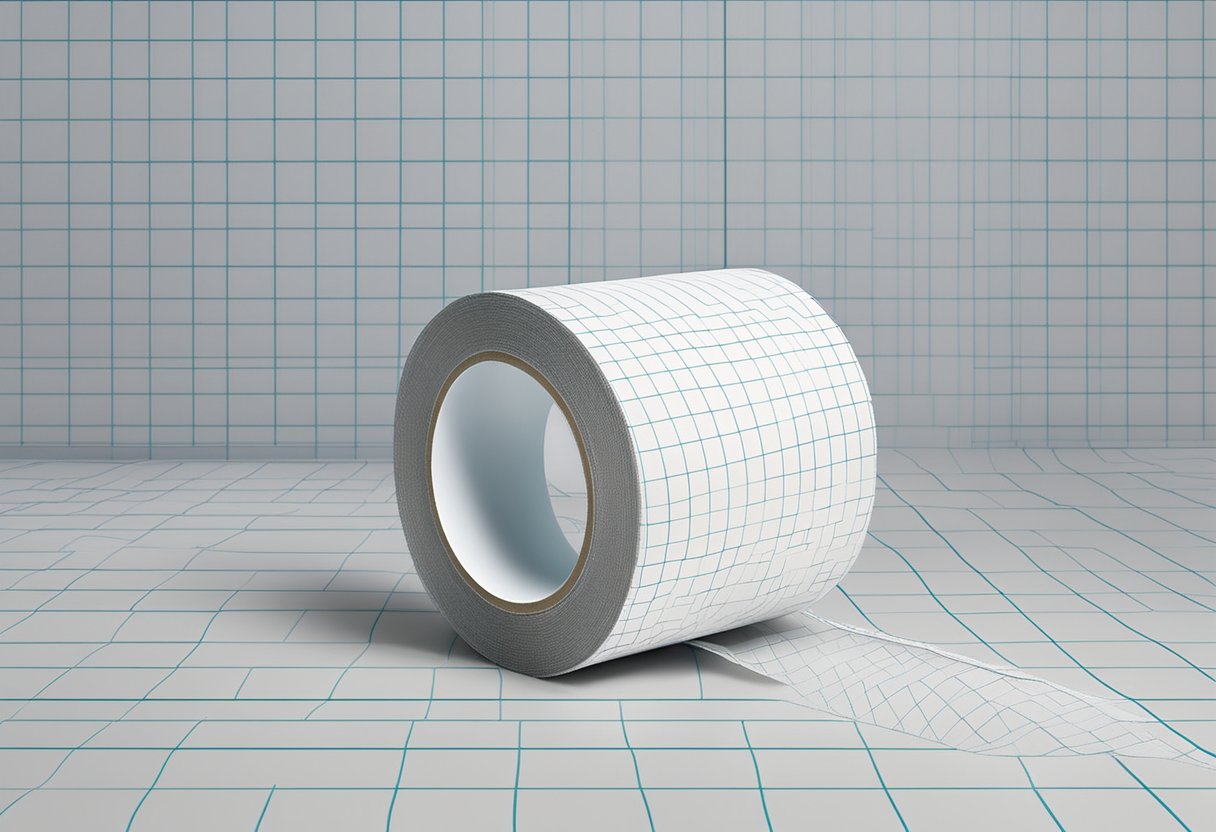Drywall Joint Fiberglass Mesh Tape: The Ultimate Guide
Drywall joint fiberglass mesh tape is a popular choice for reinforcing drywall joints and preventing cracks. It is made of a woven fiberglass mesh that is coated with a self-adhesive material. The tape is applied to the joint between two pieces of drywall and covered with joint compound to create a smooth, seamless surface.

One of the benefits of using drywall joint fiberglass mesh tape is its strength and durability. The mesh is designed to provide extra reinforcement to the joint, which helps to prevent cracks from forming over time. This is especially important in areas where there is a lot of movement or stress, such as around windows and doors. Additionally, the self-adhesive backing makes it easy to apply and ensures that the tape stays in place.
Another advantage of using drywall joint fiberglass mesh tape is its versatility. It can be used on both flat and curved surfaces, making it a great choice for a variety of projects. It is also compatible with a wide range of joint compounds and textures, so it can be used to achieve a variety of finishes. Overall, drywall joint fiberglass mesh tape is a reliable and practical solution for reinforcing drywall joints and ensuring a smooth, professional finish.
Drywall Joint Fiberglass Mesh Tape Overview

Drywall joint fiberglass mesh tape is a popular choice for reinforcing joints between drywall panels. It is made of a woven fiberglass mesh that is coated with an adhesive on one side. This tape is designed to be applied to joints before joint compound is applied, creating a strong bond between the drywall panels.
One of the benefits of using fiberglass mesh tape is its strength. It is able to withstand stress and movement without cracking or tearing, which can be a problem with paper tape. Additionally, the mesh allows for better adhesion of joint compound, resulting in a smoother finish.
Fiberglass mesh tape is also easy to use. It can be cut to size with scissors and applied directly to the joint. It is self-adhesive, so it sticks to the drywall without the need for additional adhesives or tools. This makes it a great option for DIYers or professionals looking for a quick and easy solution.
Overall, drywall joint fiberglass mesh tape is a reliable and efficient option for reinforcing drywall joints. Its strength, cloth tape ease of use, and ability to create a smooth finish make it a popular choice for both novice and experienced drywall installers.
Types of Drywall Tape

Drywall tape is an essential component of any drywall installation. It is used to reinforce seams between drywall sheets and prevent cracks from appearing in the wall. There are several types of drywall tape available, each with its own advantages and disadvantages.
Paper Tape
Paper tape is the most commonly used type of drywall tape. It is made from kraft paper and is typically 2 inches wide. Paper tape is easy to use and is ideal for covering flat seams. It is also very affordable, making it a popular choice among DIY enthusiasts.
Fiberglass Mesh Tape
Fiberglass mesh tape is a newer type of drywall tape that has become increasingly popular in recent years. It is made from woven fiberglass threads and is self-adhesive, making it easy to apply. Fiberglass mesh tape is ideal for use in areas that are prone to cracking, such as corners and edges. It is also very strong and durable, making it a good choice for high-traffic areas.
Metal Corner Bead
Metal corner bead is a type of drywall tape that is used to reinforce corners. It is made from galvanized steel and is available in a variety of sizes. Metal corner bead is very strong and durable, making it ideal for areas that are likely to be bumped or hit. It is also very easy to install, making it a popular choice among contractors.
In conclusion, there are several types of drywall tape available, each with its own advantages and disadvantages. Paper tape is the most commonly used type and is ideal for covering flat seams. Fiberglass mesh tape is a newer type that is ideal for use in areas that are prone to cracking. Metal corner bead is a type of drywall tape that is used to reinforce corners and is very strong and durable.
Advantages of Fiberglass Mesh Tape

Strength and Durability
One of the main advantages of using fiberglass mesh tape for drywall joints is its strength and durability. The fiberglass material is stronger than paper tape, making it less likely to tear or crack. This means that it can withstand more stress and pressure over time, resulting in a longer-lasting joint. Additionally, fiberglass mesh tape is resistant to moisture, which can weaken paper tape and cause it to fail.
Mold Resistance
Another advantage of fiberglass mesh tape is its resistance to mold. Mold thrives in moist environments, making it a common problem in areas with high humidity or water damage. However, fiberglass mesh tape is made from non-organic materials that do not provide a food source for mold to grow on. This makes it an ideal choice for areas that are prone to mold growth, such as bathrooms or basements.
Ease of Application
Fiberglass mesh tape is also easier to apply than paper tape. Its self-adhesive backing allows for easy positioning on the joint, and its flexibility allows it to conform to curves and angles more easily than paper tape. Additionally, fiberglass mesh tape requires fewer layers of joint compound than paper tape, resulting in a faster and more efficient application process.
In summary, fiberglass mesh tape offers several advantages over traditional paper tape for drywall joints. Its strength and durability, mold resistance, and ease of application make it a popular choice for both professional contractors and DIY enthusiasts.
Installation Process
Surface Preparation
Before applying drywall joint fiberglass mesh tape, the surface must be cleaned thoroughly and free of any debris. Any loose paint, drywall compound, or other materials should be removed. The surface should be dry and free of moisture. Any gaps or cracks should be filled with joint compound and allowed to dry completely.
Application Technique
To apply drywall joint fiberglass mesh tape, cut the tape to the desired length and apply it over the joint. The tape should be centered over the joint and pressed firmly into place. It is recommended to use a drywall knife or trowel to smooth out any wrinkles or bubbles in the tape. It is important to avoid stretching the tape as this can cause it to lose its strength.
Finishing Touches
After the tape has been applied, it should be covered with a layer of joint compound. The joint compound should be applied in thin layers, allowing each layer to dry completely before applying the next. It is recommended to use a wider trowel for each layer to ensure a smooth and even finish. Once the joint compound has dried, it can be sanded lightly to create a smooth finish.
Overall, the installation process for drywall joint fiberglass mesh tape is straightforward and can be completed with minimal experience. However, it is important to follow the proper techniques and take the necessary steps to ensure a strong and durable finish.
Common Mistakes and Solutions
Avoiding Bubbles and Wrinkles
One of the most common mistakes when using drywall joint fiberglass mesh tape is the formation of bubbles and wrinkles. This can occur when the tape is not properly embedded in the joint compound. To avoid this, it is essential to use the right amount of joint compound and apply it evenly.
Another solution is to cut the tape into shorter lengths. This can help to reduce the likelihood of bubbles and wrinkles forming. Additionally, it is important to use a drywall knife to smooth out any bubbles or wrinkles that do occur.
Proper Joint Compound Use
Another common mistake when using drywall joint fiberglass mesh tape is applying too much or too little joint compound. This can result in an uneven finish or cause the tape to peel away from the wall.
To avoid this, it is important to apply the joint compound in thin layers, allowing each layer to dry before applying the next. It is also important to use the right type of joint compound for the job. For example, lightweight joint compound is ideal for finishing drywall joints, while all-purpose joint compound is better suited for larger jobs.
By following these tips, users can avoid common mistakes when using drywall joint fiberglass mesh tape and achieve a smooth, professional finish.
Repair and Maintenance
Drywall joint fiberglass mesh tape is a durable and long-lasting solution for repairing and reinforcing drywall joints. However, like any other construction material, it requires proper maintenance to ensure its longevity and effectiveness.
One of the most common issues with drywall joint fiberglass mesh tape is cracking. This can occur due to a variety of reasons, including settling of the building, moisture, or improper installation. If cracks do appear, they should be repaired immediately to prevent further damage.
To repair cracks in drywall joint fiberglass mesh tape, the damaged area should be cut out using a utility knife or drywall saw. A new piece of tape should then be applied over the area, making sure to overlap the existing tape by at least one inch on all sides. The joint compound should be applied over the tape, feathered out to create a smooth finish. Once the joint compound is dry, it can be sanded and painted.
Regular maintenance of drywall joint fiberglass mesh tape is also important. This includes cleaning the surface of the tape with a damp cloth to remove any dust or debris. If the tape is exposed to moisture, it should be allowed to dry completely before any repairs are made.
Overall, with proper repair and maintenance, drywall joint fiberglass mesh tape can provide a strong and reliable solution for reinforcing drywall joints.
Comparison to Paper Tape
When it comes to drywall joint tapes, fiberglass mesh tape and paper tape are two of the most commonly used options. While both tapes serve the same purpose of reinforcing joints and preventing cracks, there are some key differences between the two.
Performance Differences
Fiberglass mesh tape is known for its superior strength and durability compared to paper tape. It is made up of a woven fiberglass mesh that is coated with an adhesive backing. This makes it highly resistant to tearing and stretching, and it can withstand changes in temperature and humidity without losing its effectiveness.
On the other hand, paper tape is made from a thin strip of paper that is reinforced with a center crease. While it is more affordable than fiberglass mesh tape, it is not as strong or durable. It is prone to tearing and can easily become saturated with moisture, which can cause it to lose its adhesive properties.
Situational Preferences
While fiberglass mesh tape is generally considered to be the superior option, there are some situations where paper tape may be preferred. For example, paper tape is easier to cut and fold, which can make it a better choice for corners and other tricky areas. Additionally, paper tape is more flexible than fiberglass mesh tape, which can make it a better choice for curved surfaces.
Overall, the choice between fiberglass mesh tape and paper tape will depend on the specific needs of the project. For high-stress areas or areas that are prone to moisture, fiberglass mesh tape is likely the better choice. However, for areas that require more flexibility or precision, paper tape may be the way to go.
Cost Considerations
When it comes to drywall joint fiberglass mesh tape, cost is an important factor to consider. While this type of tape is typically more expensive than paper tape, it offers several benefits that may justify the higher price.
One cost consideration to keep in mind is the amount of tape needed for a project. Fiberglass mesh tape is typically wider than paper tape, which means that fewer strips are needed to cover a joint. This can help offset the higher cost of the tape itself.
Another factor to consider is the cost of labor. Fiberglass mesh tape is easier to work with than paper tape, which can save time and reduce the need for skilled labor. This can help offset the higher cost of the tape itself.
It is also important to consider the long-term cost savings of using fiberglass mesh tape. Because it is more resistant to cracking and shrinking than paper tape, it may require less maintenance and repair over time. This can help save money in the long run.
Overall, while fiberglass mesh tape may be more expensive than paper tape, its benefits may justify the higher cost. By reducing the amount of tape needed, saving on labor, and providing long-term cost savings, it can be a cost-effective choice for many projects.
